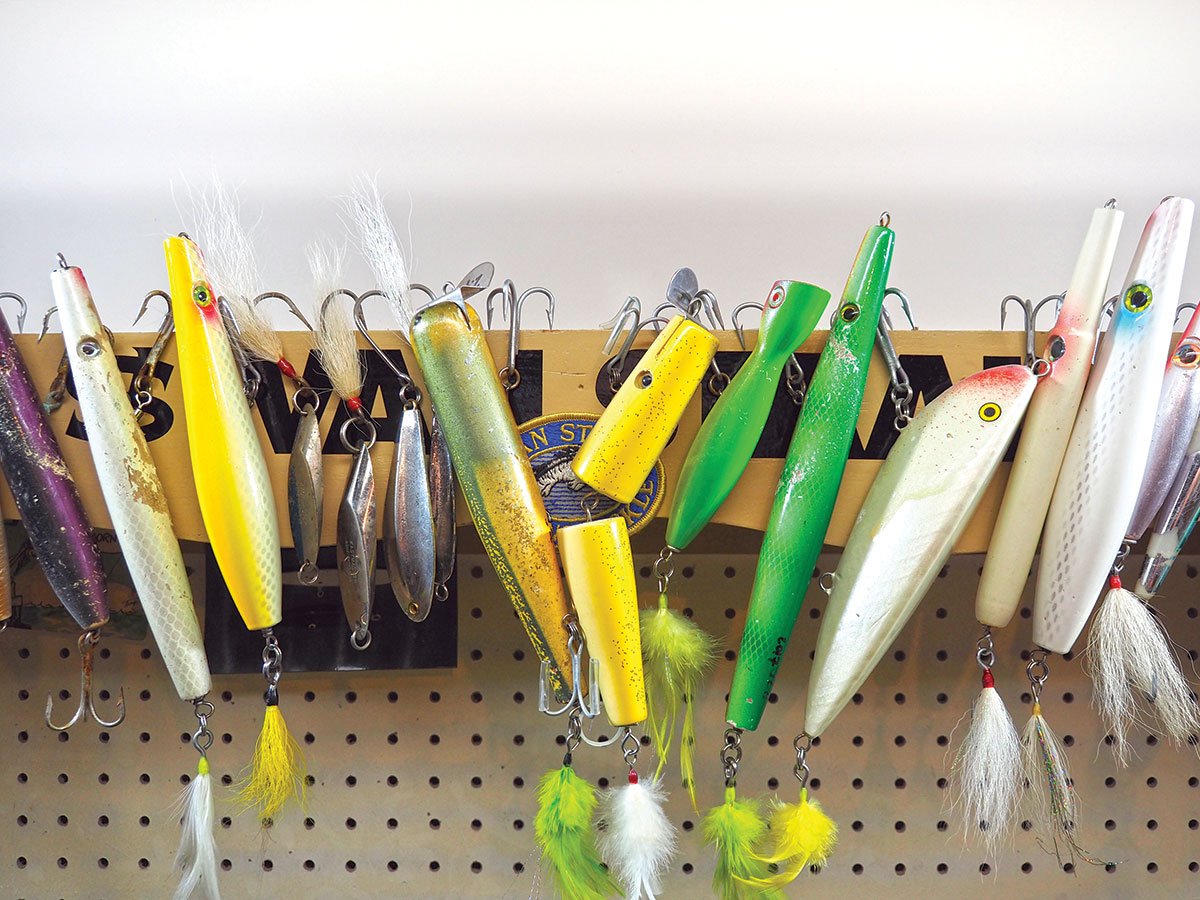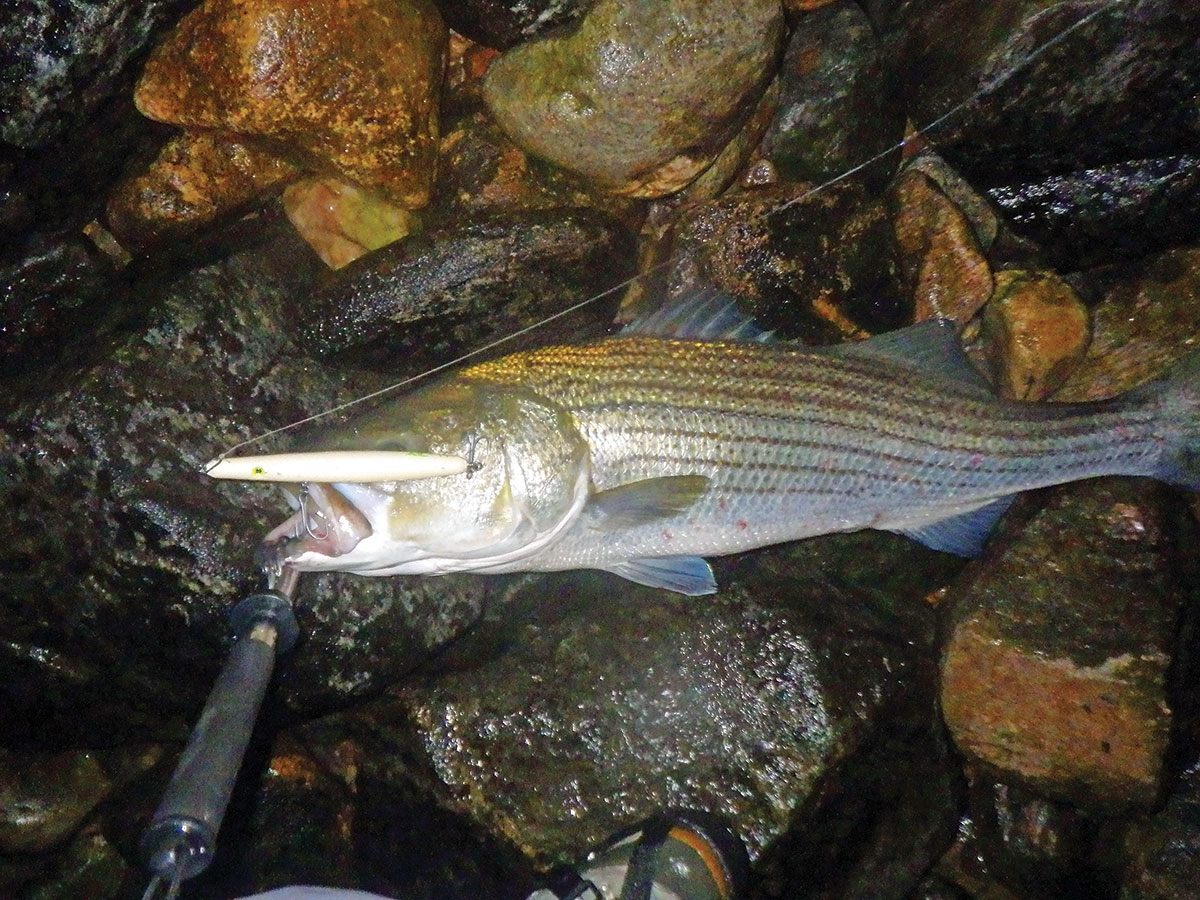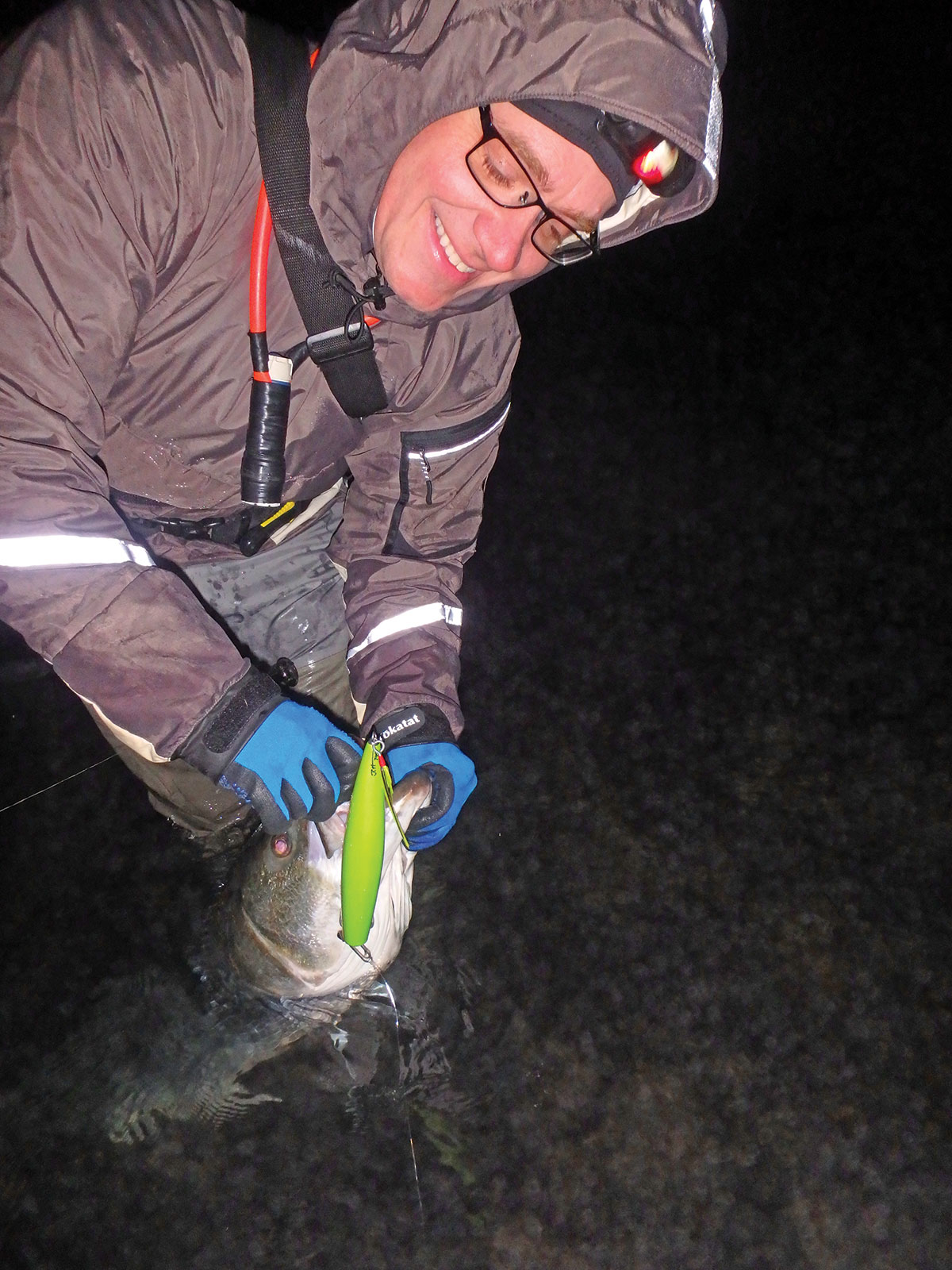
Out of the box retrieves with poppers, pencils, needlefish, metal lips and tins.
When a manufacture sets out to design a new lure, odds are good that they have a specific vision for how they want to lure to act in the water. They spend many hundreds of hours perfecting the design to ensure consistent casting and swimming properties, and it is only then that they release the final product to the public. Once in the hands of fishermen we almost immediately begin trying to figure out ways in which the design can be improved upon or tweaked to best fit certain niche scenarios, many times producing a result never intended or imagined by the lure’s engineers. Sometimes these modifications are as simple as changing out hooks or adding feathers where bare hooks were originally found, while other times the mods go deeper as additional weight is added to increase both casting distance and depth of swim. Here are a few examples of when one lure style can be made to perform like another, resulting in more fish being slid up on the beach.
Swim a Popper
Poppers, by nature of the design and name, are meant to do little more than pop, right? Wrong! There are lots of popper designs on the market, but for this discussion I am referring to straight-bodied and “little neck” styles only.
A few years ago we ran an article written by Capt. Mike Roy (September 5, 2013 Skin-A-Popper) which detailed the steps to add an eelskin to the 2-3/8-ounce Super Strike Little Neck popper. Since then I’ve made the popper a staple in my surf bag on nights when I’m fishing a spot that requires a really long cast, as well as those nights when a stinging wind blasts off the ocean, straight in my face. But it’s not just the Super Strike that swims, I’ve had success “swimming” the largest of the Gibbs bottle plugs and the guys behind Ocean Born Lures make a popper that produced a seductive wiggle in the test tank at ICAST 2019 back in July.
So how does one get a popper to swim? Begin with a sinking popper. There might be floaters out here that have some wiggle to them, but all of my experiences are in the sinking models. Heck, I almost feel that a swimming popper can’t be too heavy as Super Strike improved the swim of their sinking Little Neck dramatically when they came out with the red eye or “heavy load” versions. I rig all of my swimmers in the same way by increasing the size of the hook on the belly hanger by at least one size and replacing the tail hook with a dressed flag. If adding an eelskin, then a short section of brass toilet chain replaces the flag.

Once rigged and at your beach of choice, cast the popper perpendicular to the current. You don’t want to cast up-current very much unless the spot is deep, and I find the plug works best in somewhat shallow to moderate depth and a cross-current, similar to what many refer to as “darter water.” Come tight to the plug, pop it a few times to get it up on top and “call in” any bass that might have missed it on splash-down, and begin a slow but steady retrieve with an occasional pop. Resist the urge—as overwhelming as it may be at times—to fish the popper as you would during the day in the middle of a bluefish blitz! Instead you want to reel just fast enough that you feel the plug thump like you would a metal lip or plastic swimmer. Some models swim so well that you can even see your rod tip bounce as you reel it in, just be ready for the hit as they can be bone-jarring!
Pop a Metal Lip
Years ago I read a chapter in To Catch A Bass by the late Tim Coleman in which he talked about casting large metal-lip plugs from a boat in towards some of his favorite rocky shoreline spots. One paragraph in particular caught my attention, and it’s something I keep in my bag of tricks to this day. It read, “If you get a swirl behind the plug, slip it right back to the same spot the second cast. If you get another look but no sale, try hauling back on the rod just like you would a popper. This will cause the lure to push forward in the water, throwing spray as it goes. The splashing sometimes makes up the mind of a hitherto unconvinced striper.”
While I don’t do as much casting towards the shore from a boat as I do out from the surf, this general concept has worked many times for me. What I’ll do is if I feel a bump on a metal lip, but the fish doesn’t take, I immediately crank the reel handle a few times followed by a pop and momentary rest before recommencing the retrieve. In my mind, this mimics a quick getaway attempt by the baitfish. Whether this is what the striper perceives or not is debatable, but the fact is that often enough it produces a follow-up strike with enough vigor to allow the hooks to find purchase.
Dance a Needlefish
How many times have you been fishing in the pre-dawn hours only to get into a pick of striped bass or bluefish that extends into daylight? If you’re anything like me, then most of the time you don’t have the forethought to pack a topwater in your plug bag. When something like this does occur, I simply clip on a needlefish and work it like a pencil popper or spook.
Begin by selecting either a floating or slow-sink needlefish; in a pinch you can accomplish the same result with a fast-sinker, but you’re going to have to work pretty hard to keep it on the surface so keep that in mind. Now cast the needlefish out and once it splashes down begin a quick, jerky, rapid retrieve to raise the nose of the needlefish to the surface. From there you can adjust your reel speed and rod-bounce cadence to transform that “pencil with hooks” into a serviceable surface plug. I have also found success at times in reeling just slow enough to keep the needlefish a few inches below the surface, and by adding delayed “pops” of my rod tip, I can make the needlefish dart and dance sub-surface sort of like a glide bait.
Skip a Tin

This is a great trick when targeting speedsters in the surf such as false albacore or bonito. Small tins cast extremely well, but there are times when fish simply do not seem to be reacting positively to a standard retrieve. This is when I reach for a metal or epoxy-type minnow and rip them on the surface.
Begin by casting the lure to a likely spot but stop the cast before it hits the water and begin a fast enough retrieve to keep the lure skipping along on the surface. You can vary the retrieve speed and add pops and stops to make the lure torpedo and jump, just be ready at any time for a strike. One tip on the strike, do not set back; simply keep reeling until you’re tight and the fish begins to take drag. If you feel the need you can strike at this point, but in all likelihood the fish is already hooked.
Experiment with different styles of tins or epoxy-type jigs as different sizes, weights and body shapes produce much different results. For example, a wide-bodied tin like a Kastmaster will plane out on top easier and can be retrieved slower, while a skinny metal like a Deadly Dick requires more speed to stay up but its shape causes it to torpedo every so often producing an even more attractive presentation.
Jig a Pencil
While in three of the four examples so far the lure being thrown is made to look more like a popper, this time around we’re going to make a popper look like a jig. It sounds weird, I know, but it works. The first time I heard of this technique was in a discussion online about Cape Cod Canal tricks. When I read the post I must admit that I was skeptical and assumed that the person making the post was trying to mess with out-of-staters. Not wanting to look the fool, I sent a text to a friend and Canal sharpie and low and behold he confirmed that this is in fact a tactic that is used by those in the know! I kind of kept this little tidbit of info to myself for the next few years, breaking it out when I made a run up to the Fish Funnel to battle both crowds and bass, and then last summer I received a query from longtime Fisherman contributor, Jamie Golden. He too had been putting the tactic to good use for some time, and he felt it was time to let the cat out of the bag.
For a complete rundown on the how/where/why of jigging a pencil popper, check out Jamie’s article—Sharpie Secrets: Jig A Pencil—which appeared in the September, 2018 New England monthly edition of The Fisherman Magazine. The short story here is that you once again begin with a sinking popper, and again the heavier the better. Several manufacturers including Guppy Lures and Left Hook Lures make special LD (long distance) versions of their pencils, but you can also take a standard Cotton Cordell pencil popper or Tsunami Talkin’ Popper and fully load it with lead shot. As with swimming the popper noted above, I replace the tail hook with a dressed flag and increase the belly treble hook by at least one size.
To jig a pencil, begin by finding a fishy yet deep spot, somewhere like the Cape Cod Canal, Galilee Channel, Shinnecock Inlet, Barnegat Inlet or any other deep outflow on the Striper Coast. Cast the pencil somewhat up-tide and allow it to sink to your desired depth just like you would a bucktail jig. Once down deep, begin a slow, steady retrieve and the pencil will wobble and slide through the current much like an injured baitfish getting swept along. You can add a little rod action if you choose, but much like a bucktail jig I prefer less extra angler-imparted action.
So the next time you’re working your favorite beach and you see a Googan down-tide hooking up on fish after fish while using the “wrong lure,” set aside your preconceived notions and consider that you might just be the one who could learn a new trick or two.



